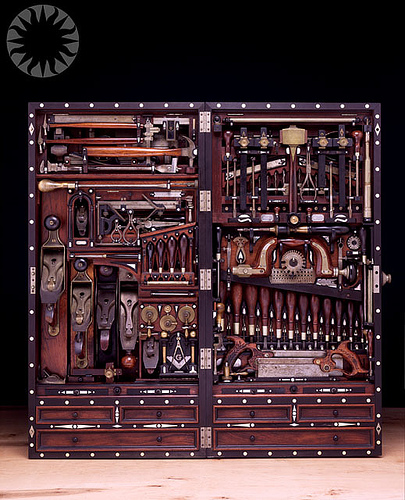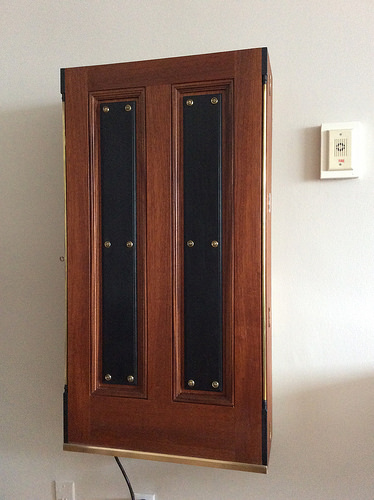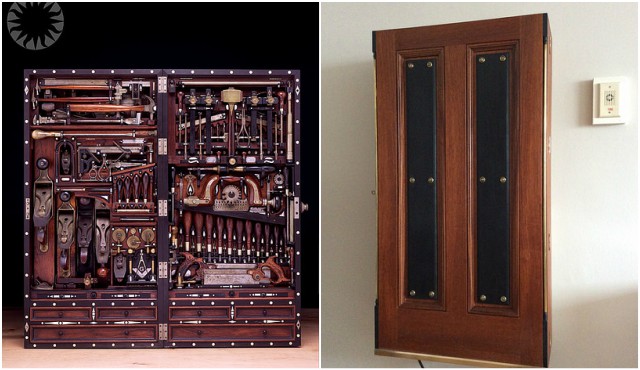Having an adequate toolbox is essential for woodworking, but there are some toolboxes that are much more than just an integral part of the process.
One such toolbox is the Studley Tool Chest.At one point, this vintage, 19th-century tool chest was displayed in the Smithsonian, and there is a good reason why. Designed by the organ and piano maker, master carpenter and mason, Henry O. Studley, this impressive toolbox which is 19 1/2 inches wide, 39 inches long and 9 1/2 inches deep, holds nearly 300 tools and weighs 72 lbs when empty or 156 lbs with tools inside it.

Henry O. Studley who designed this amazing toolbox was born in 1838 in Lowell, Massachusetts. He joined the Massachusetts Infantry in 1861 and two years later he was captured in Galveston and held as a prisoner of war.
When the Civil War ended in 1865, Studley went to Quincy, and in 1871, he joined the Rural Masonic Lodge. Later, he was employed by the Smith Organ Co. in Boston, Massachusetts and remained there for the next 25 years until he joined the Poole Piano Co. It is believed that Studley created the famous toolbox during his time at the Poole Piano Co.
In order to create the stunning toolbox, Studley mainly used materials for manufacturing pianos, including ivory, rosewood, ebony, mother-of-pearl, and mahogany. As reported by My Modern Met, Studley designed it to hold his own tools, and each of his tools had its proper space, even clicking when placed inside. It is obvious that Studley paid attention to every detail and designed the toolbox with great precision.
The Studley Tool Chest was designed to be hung on a wall, but that was a difficult task because there are nearly 300 tools and it is said that it takes three men to lift it on the wall. The Studley Tool Chest holds numerous manufactured tools, but there are also many tools which Studley himself made, including rosewood, brass, and ebony marking gauges.

Studley continued working for the Poole Piano Co. even in his 80s and, before he had passed away in 1925, he gave his tool chest to a friend. Peter Hardwick, who was that man’s grandson, loaned the famed toolbox to the Smithsonian Institute’s National Museum of American History for research, conservation, and after 245 hours of restoring, it was finally displayed.
A private collector purchased it in the 1990s for an undisclosed amount of money and later sold it to another private collector where the Studley Tool Chest now resides.
